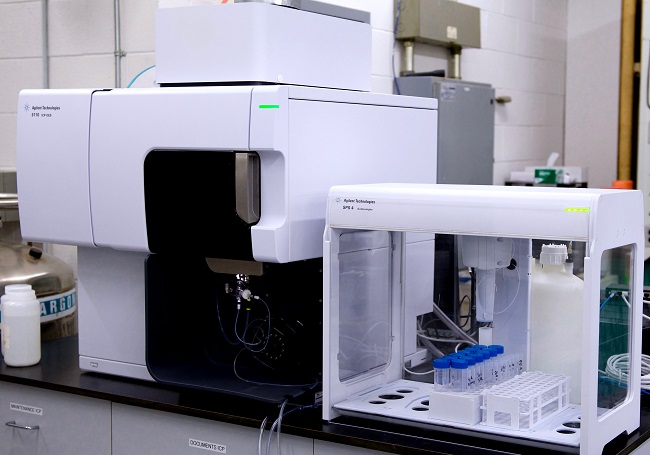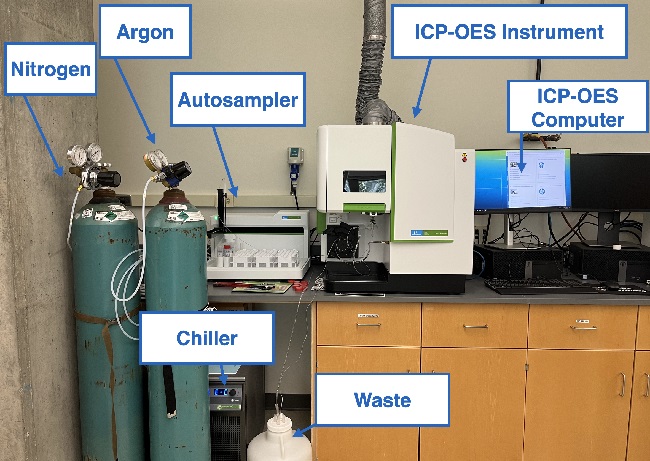In analytical chemistry, Inductively Coupled Plasma Optical Emission Spectroscopy (ICP-OES) instruments emerge as the torchbearers of precision analysis. From advancing environmental monitoring to revolutionizing materials testing, ICP OES instruments have transformed the landscape of analytical chemistry.
This article will offer a profound understanding of ICP-OES instruments, their advantages, and their applications when selecting the right one for your analytical needs.

How ICP-OES Instruments Work
ICP-OES (Induct
ively Coupled Plasma Optical Emission Spectrometry) instruments are analytical tools used to determine the elemental composition of a sample. They operate based on a high-temperature, ionized plasma gas, typically argon, which serves as a source of excitation.
Read Also:
Generally, ICP-OES instruments are highly sensitive and capable of simultaneously analyzing various elements. This makes them invaluable Tools in various fields, including environmental analysis, pharmaceuticals, and materials science.
Advantages of ICP-OES Instruments
ICP-OES instruments offer several key advantages that make them invaluable tools in various analytical applications, and these include:
High Throughput Analysis
These instruments are known for their ability to analyze many elements in a single run, making them highly efficient for high-throughput testing. This is particularly beneficial in laboratories where a high sample throughput is vital, as it lessens analysis time and increases overall productivity.
Wide Elemental Coverage
ICP-OES instruments can simultaneously detect and quantify various elements, from alkali metals to heavy metals, across the periodic table. This broad elemental coverage is crucial in many fields, such as environmental monitoring, where samples may contain diverse elements.
Low Detection Limits
Since ICP-OES instruments can achieve exceptionally low detection limits, they can detect trace amounts of elements even at very low concentrations. This sensitivity is crucial for applications like trace metal analysis in environmental samples or detecting pharmaceutical impurities.
Precision and Accuracy
These instruments provide precise and accurate results, ensuring the reliability of analytical data. This is particularly important in industries like pharmaceuticals and materials science, where even slight variations in elemental composition can significantly affect Product quality and safety.
Applications of ICP-OES Instruments
These instruments find diverse applications across various fields due to their capabilities, and these include:

Environmental Analysis
ICP-OES is extensively used in environmental analysis to assess the quality of air, water, soil, and sediment. It helps monitor and detect trace elements, heavy metals, and pollutants, ensuring compliance with environmental regulations.
This is crucial for safeguarding ecosystems and human Health by identifying and quantifying contaminants in environmental samples.
Pharmaceutical Quality Control
In the pharmaceutical industry, ensuring product quality and safety is paramount. ICP-OES plays a vital role in pharmaceutical quality control by analyzing raw materials, finished products, and drug formulations.
It verifies the elemental composition of pharmaceuticals, detects impurities, and ensures compliance with stringent regulatory standards.
Geological and Mining Studies
Geologists and mining professionals rely on ICP-OES for geological exploration and mining studies. It helps identify and quantify elements in rocks, minerals, and ores.
By analyzing trace elements and metals, ICP-OES assists in ore grade determination, mineral exploration, and assessing potential mining sites, contributing to the efficiency and sustainability of mining operations.
Material Characterization
ICP-OES is employed for material characterization and analysis in material science and engineering. Researchers and engineers use it to determine the elemental composition of various materials, including metals, alloys, ceramics, and polymers.
By accurately quantifying elements and impurities, ICP-OES assists in developing and improving materials for specific applications. It is indispensable in aerospace, automotive, electronics, and construction to assure product quality and performance.
Read Also:
Making an Informed Decision for Your Application
ICP-OES isn’t just a Technology; it’s a gateway to precision, enabling breakthroughs in scientific research, environmental protection, and industry quality control.
So, take the lessons learned from this comprehensive guide and apply them to your unique application. Your journey to precision, accuracy, and discovery begins with a well-informed decision.



















